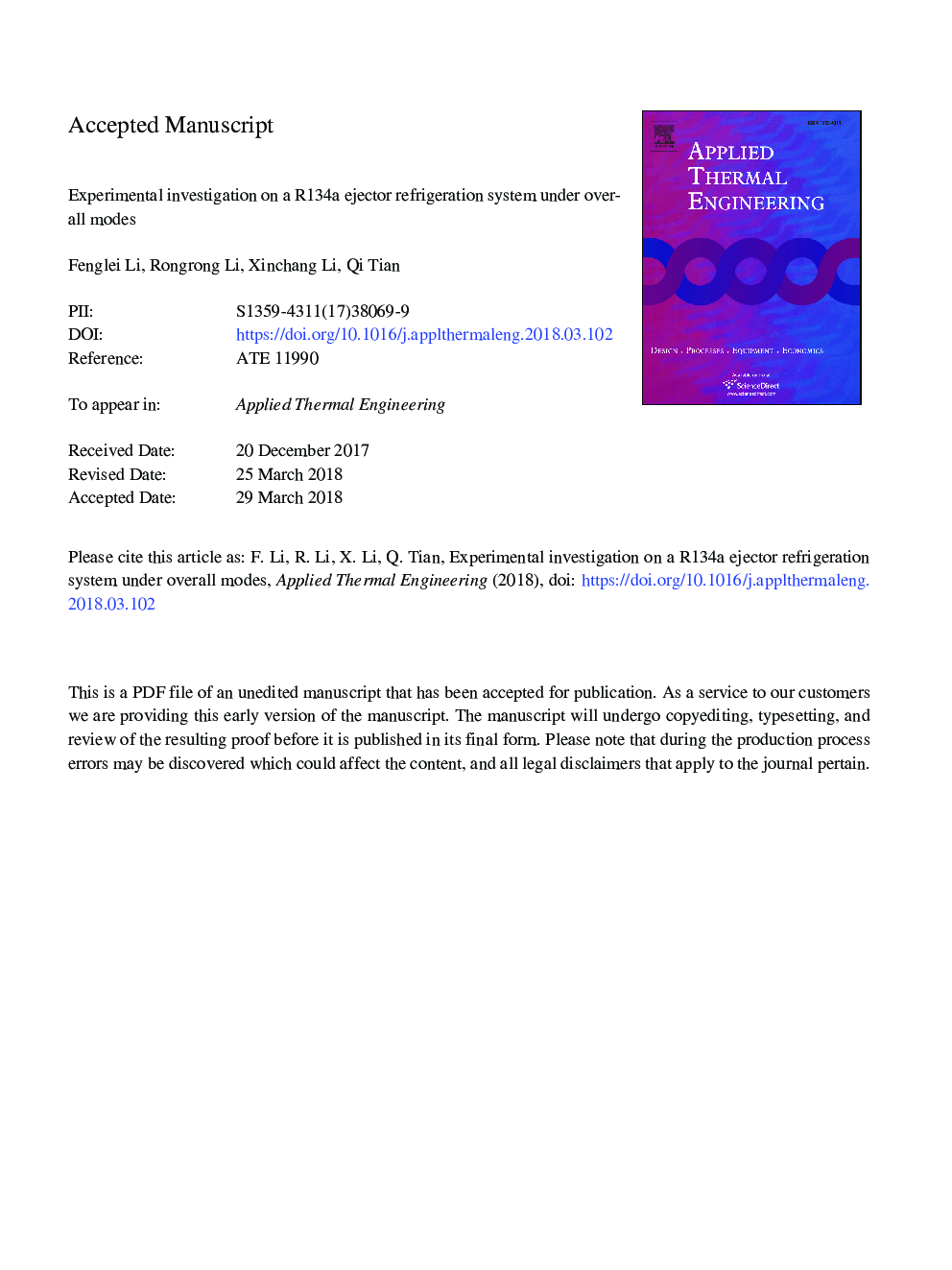| Article ID | Journal | Published Year | Pages | File Type |
|---|---|---|---|---|
| 7045512 | Applied Thermal Engineering | 2018 | 22 Pages |
Abstract
The performance of an ejector refrigeration system (ERS) with R134a ejectors was investigated experimentally. More stable operating states under overall modes were achieved by adopting shell-and-tube heat exchangers and setting the branch of pipe to the expansion valve between the condenser and the liquid receiver. It is found that the change of the ejector operational mode caused by varying the operating and geometric parameters of ejector has significant impact on ejector performance. With a rising generating temperature, the entrainment ratio can first increase and then decrease because the operational mode changes from subcritical mode to critical mode. A rise of the ejector area ratio can cause an increase in the critical entrainment ratio at the expense of a decrease in the critical condensing temperature. Moreover, the COP and the cooling capacity of the ERS behave similarly to the entrainment ratio. Empirical correlations obtained from the experimental data can accurately predict the critical entrainment ratio, the critical condensing temperature and the breakdown condensing temperature.
Keywords
Related Topics
Physical Sciences and Engineering
Chemical Engineering
Fluid Flow and Transfer Processes
Authors
Fenglei Li, Rongrong Li, Xinchang Li, Qi Tian,
